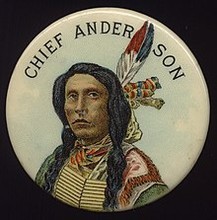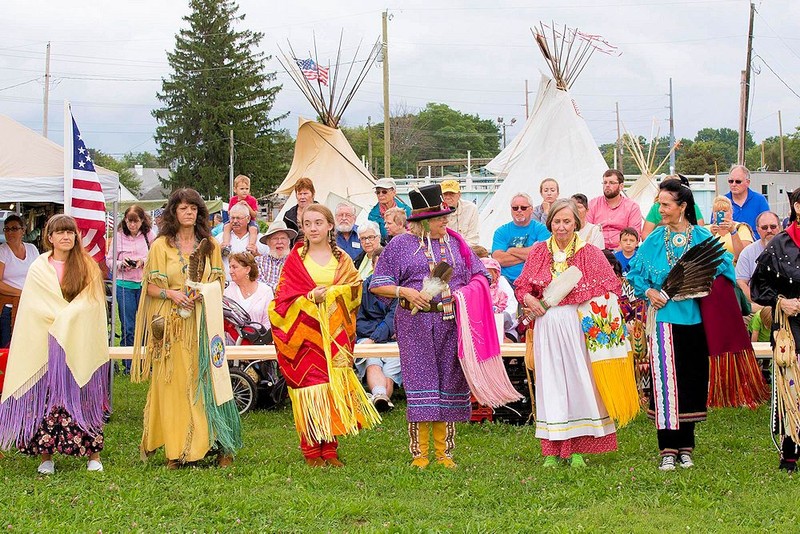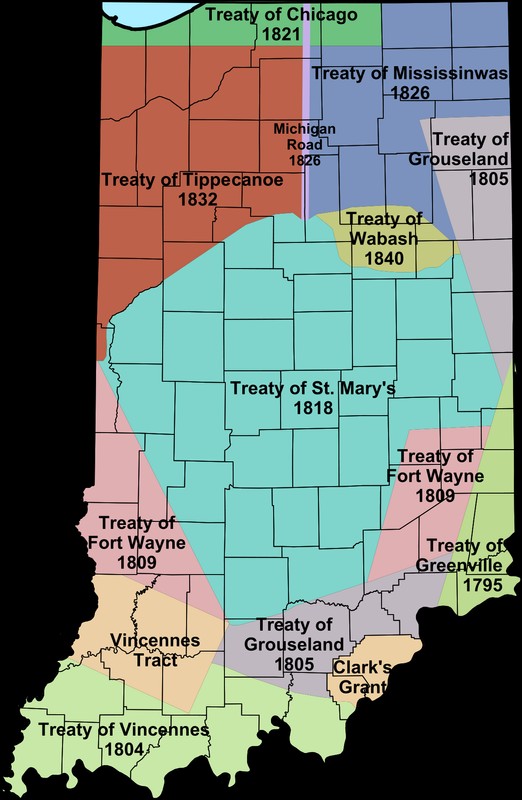Delaware Indian Settlement: Waperminskink (present day Anderson)
Introduction
Text-to-speech Audio
Images
Portrait of Chief Anderson

Anderson Powwow - 2019

Map of lands ceded in treaties

Backstory and Context
Text-to-speech Audio
The Delaware people referred to themselves as the Lenape, and they referred to the White River in Indiana as the Wapahani River. They travelled from their homeland in the Delaware River Valley towards Indiana on their forced expansion westward, pushed by white European settlers. Their tribe was dwindling in numbers by the time they reached Indiana in the late 18th century due to the spread of disease and conflicts with Europeans. Settling in what was previously Miami Indian territory, the Lenape would settle between what is present day Muncie, IN, and just north of the present northern Marion County line.
Kiktuchwenind, also known as Chief Anderson, was one of the Native American chiefs that spoke for the tribe in the Treaty of Greenville. His youngest daughter, Mekinges, would marry a white trader named William Conner, who participated in the historic fur trade, aided by transport on the White River. The Treaty of St. Mary’s, signed in 1818, ceded most of the land in central Indiana to the Europeans, marking the end of the time that the Lenape would dwell in this part of the state.
Sources
Jackson, S.T. (2016). "If the river could talk: Moravians had a relatively short stay." The Herald Bulletin, https://www.heraldbulletin.com/community/if-the-river-could-talk-moravians-had-relatively-short-stay/article_60b2b1ca-56f3-5acb-a723-cf5ed936790d.html Accessed 20 Apr. 2021.
Ball State TCOM. (2014). Lenape on the Wapahani River. https://vimeo.com/268588410
https://en.wikipedia.org/wiki/Chief_William_Anderson
https://www.crazycrow.com/site/event/andersontown-powwow-and-indian-market/
https://en.wikipedia.org/wiki/Indian_removals_in_Indiana
